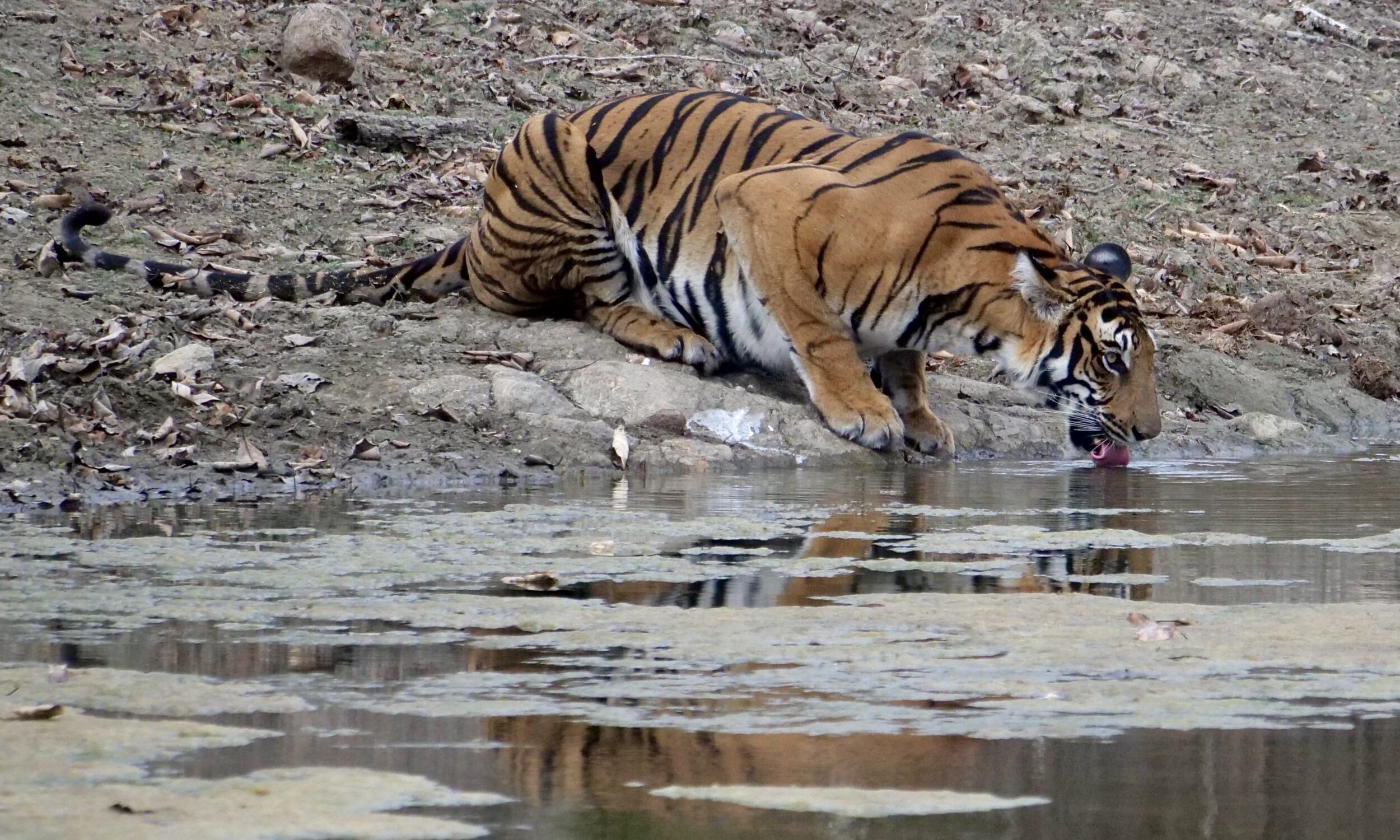It was late afternoon, on our final “full” day in and around Nagarhole Tiger Reserve.
We were midway through the eighth of our nine Nagarhole wildlife “drives”.
Tiger-wise, time was running out.
We had enjoyed many “close encounters of the wildlife kind”, including one with a very healthy leopard.
On two occasions we had seen a tiger…just, fleetingly.
On more than two other occasions our ears had provided unmistakable evidence that a leopard or tiger was “on the prowl”, nearby.
However, at 4.52 pm on 07 March it appeared likely that we were not going to experience any 2023-vintage, visual “close encounter of the tiger kind”.
I took the featured photo – above – at 4.58 pm.
This post’s photos were taken between 4.54 pm and 5.24 pm, all from the same vantage point, looking at the same, female tiger.
She walked out of the forest – and into our view – at 4. 53 pm.
All other mammals had by then vacated the waterhole’s vicinity.
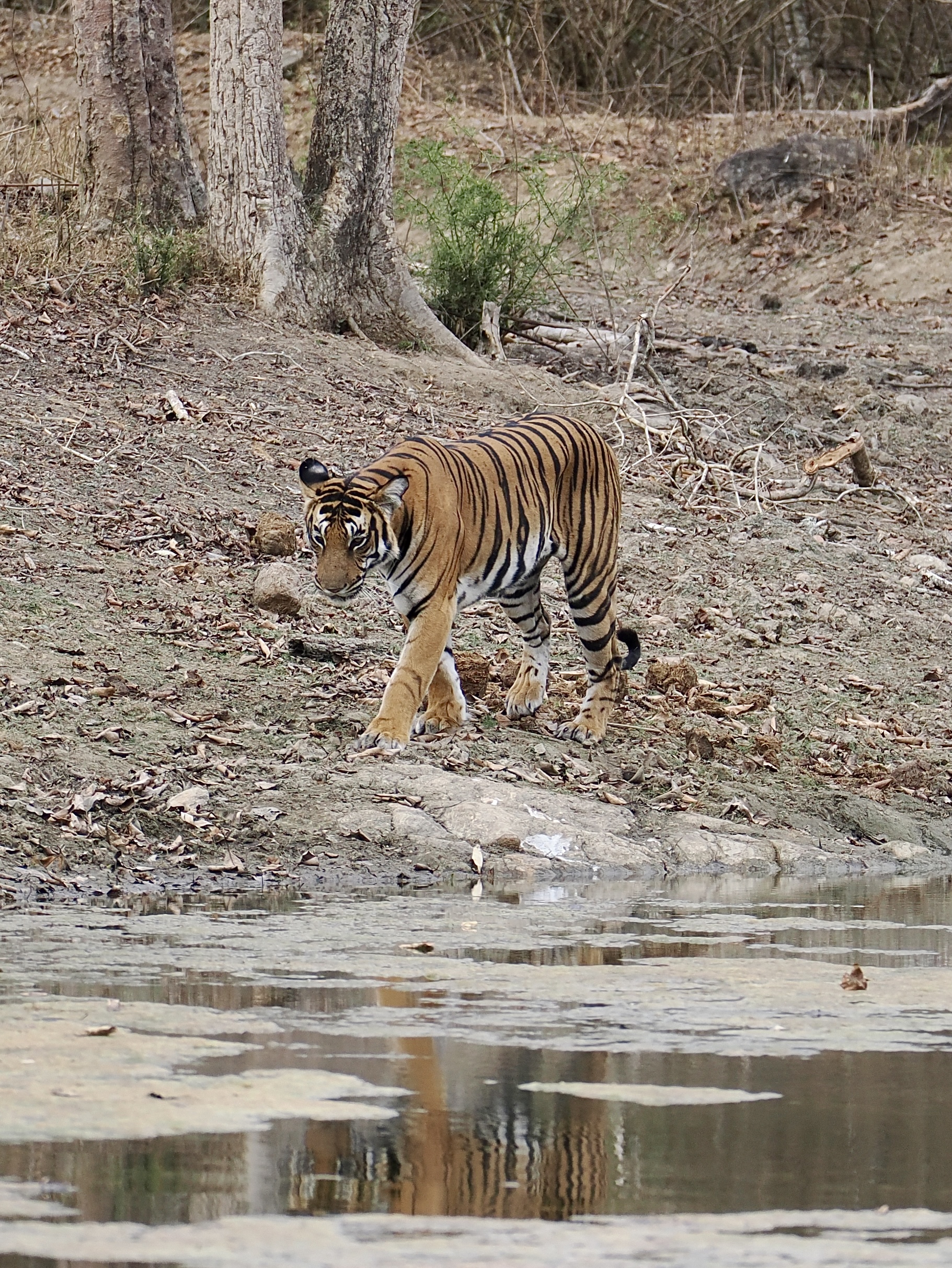
Within one minute, she was drinking.
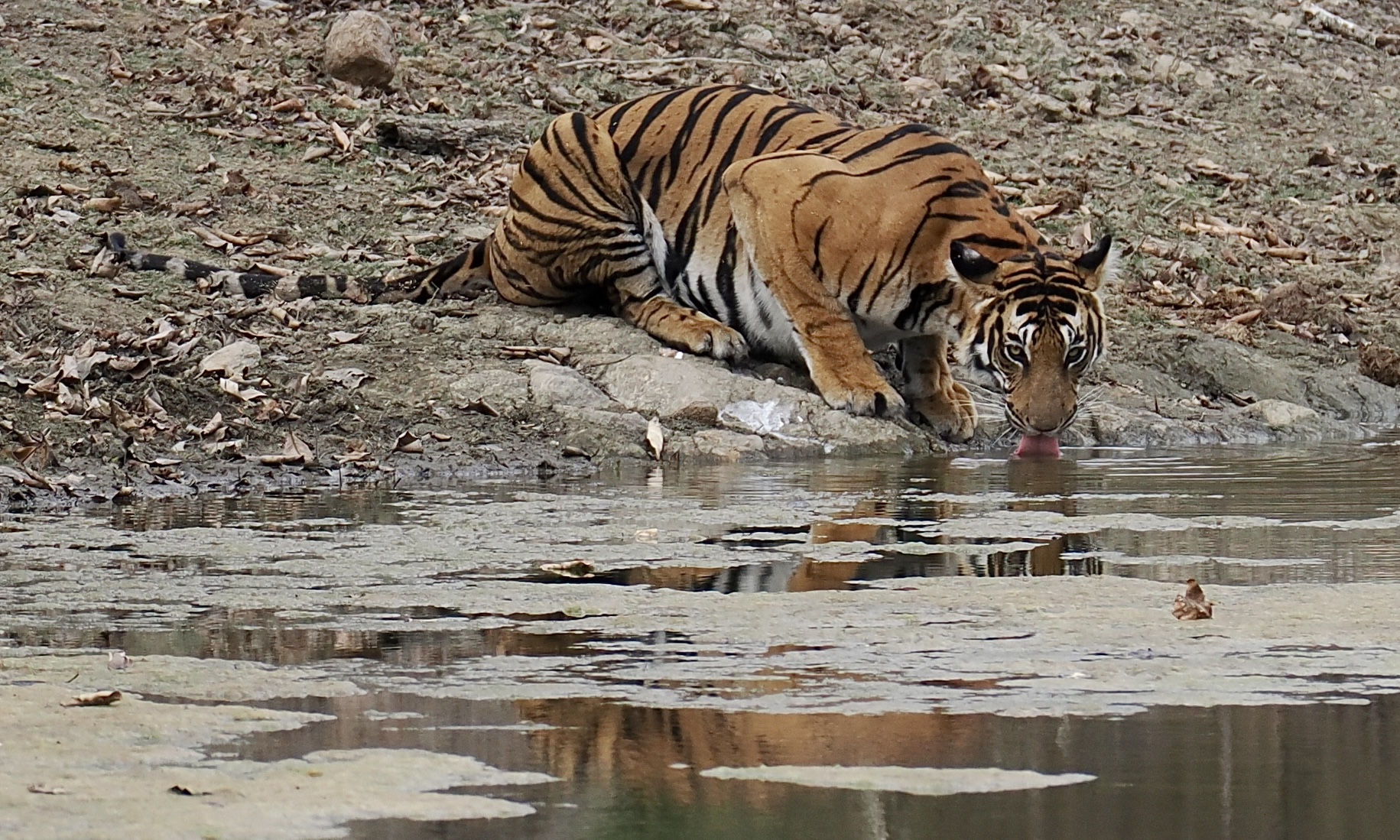
Then, for a reason not apparent to us, she stopped, and looked around.
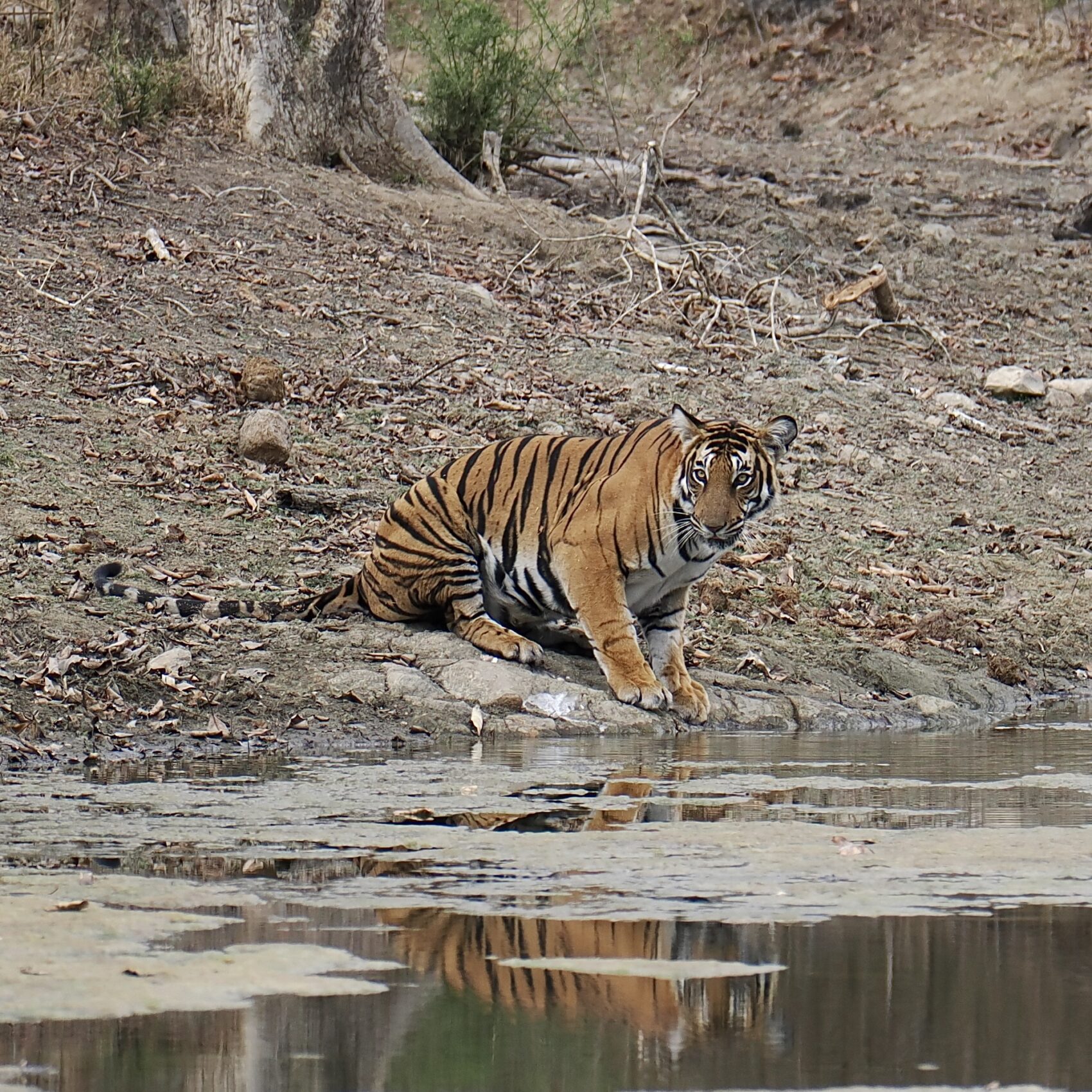
She then moved further along the waterhole’s shore; happily, she was moving closer to us.
This “quick drink, then stop, look around, move a few metres along water’s edge, then have a quick drink, then look around, move along, have a quick drink” sequence occurred three times.
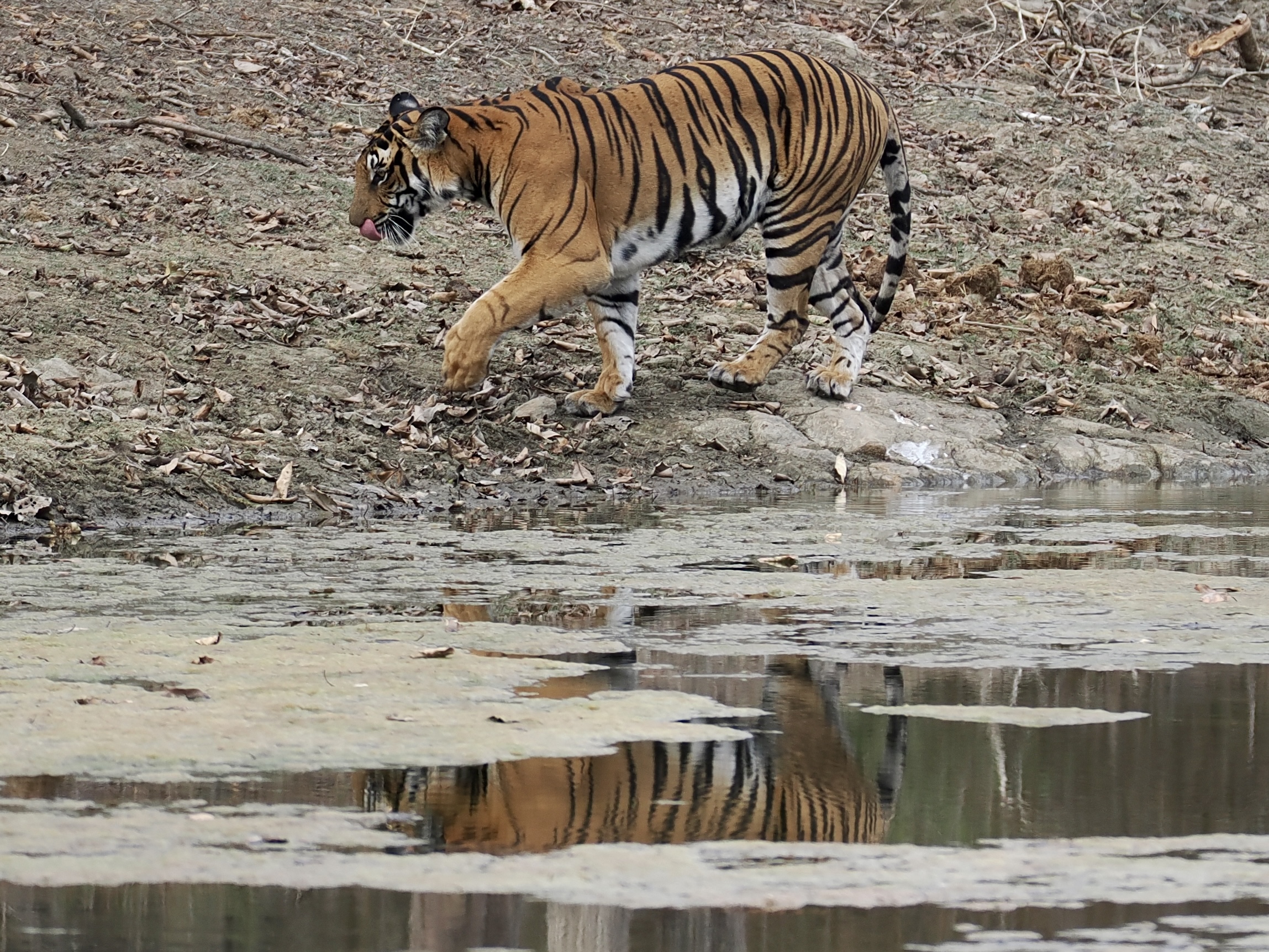
Tigers have a flat-footed walk, with both the forelegs and hind legs on the same flank moving simultaneously (unlike dogs and hoofed animals). This gives an impression of languorous grace to their walk: no two-legged model sashaying on the “catwalk” can attain that grace. But the slowness of the tiger’s walk is an illusion; the cat’s lengthy strides can propel it forward quite rapidly.
K. Ullas Karanth’s italicised description is from his book, Among Tigers: Fighting to Bring Back Asia’s Big Cats, recently published by Chicago Review Press.
Arguably, Karanth is the world’s leading tiger scientist. Much of his ground-breaking research was conducted in Nagarhole.
He has also long been one of the more effective/indefatigable and politically astute tiger conservationists/activists; Karanth has a very acute “bullshit filter”. (two examples thereof are at the bottom of this post)
Unlike rather too many other “animal activists”, Karanth is always mindful of humans’ wellbeing.
And, unlike rather too many other scientists, he is a wonderfully vivid writer, with a delicious sense of humour.
I agree with the great George Schaller’s assessment: masterfully written, Among Tigers is a conservation classic.
It will almost certainly tell most of its readers much that they did not already know about tiger behaviour…and about human behaviour, in the context of “tiger politics”, most especially within India, but also globally.
If you are the least bit interested in tigers – and/or in wildlife conservation issues, generally – Among Tigers is a must-buy; it could upend some of your preconceptions about tigers…and about how best to “save” them.
Anyone who has read Among Tigers is highly likely to understand (and agree with) this typically well-honed sentence:
Unfortunately, many enthusiastic urban warriors fighting the tiger’s cause suffer from what I call “Born Free” syndrome.
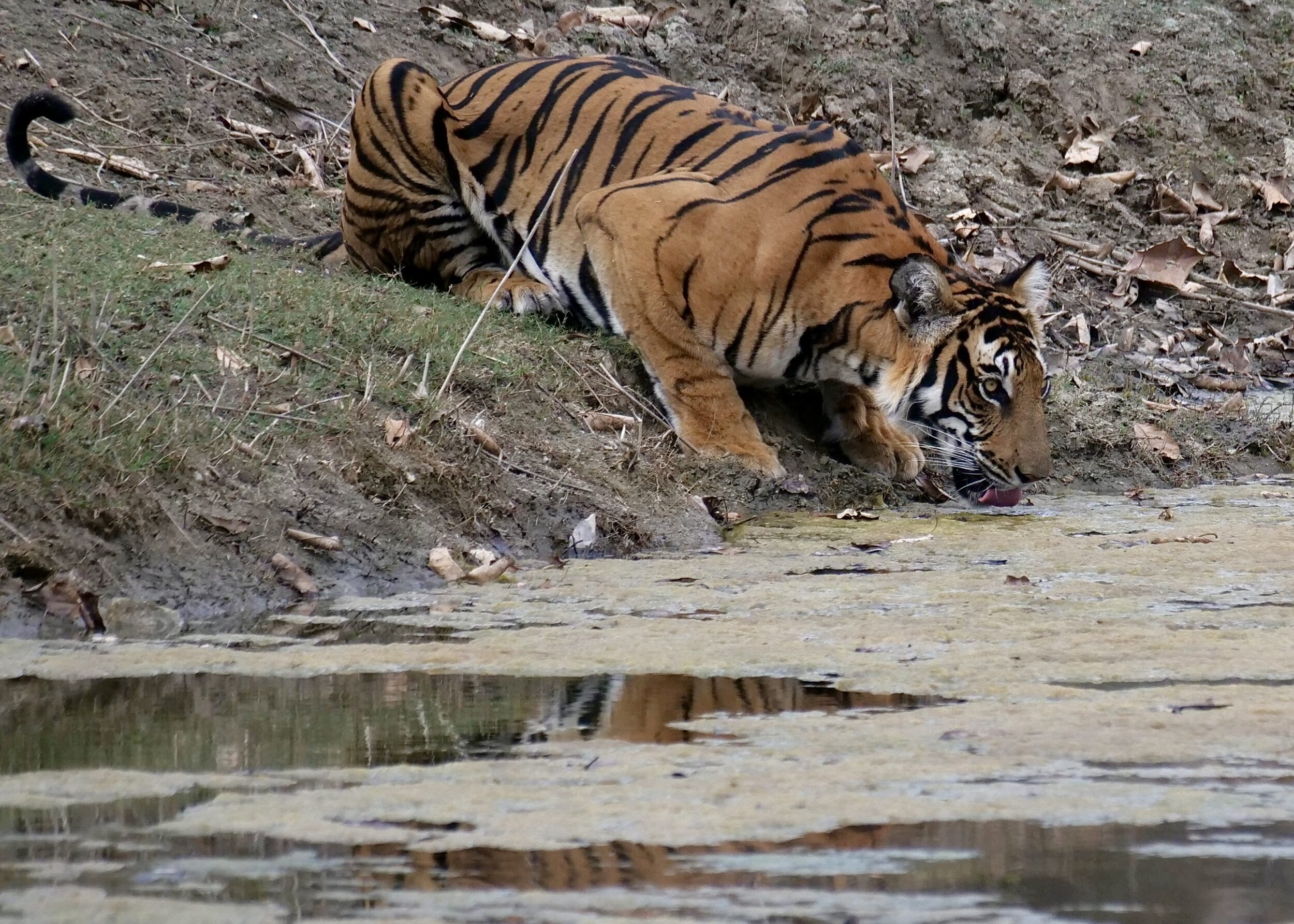
After drink #3 our heroine gave a casually-exquisite display of that grace as she moved away from the water, and up onto a grassy bank.
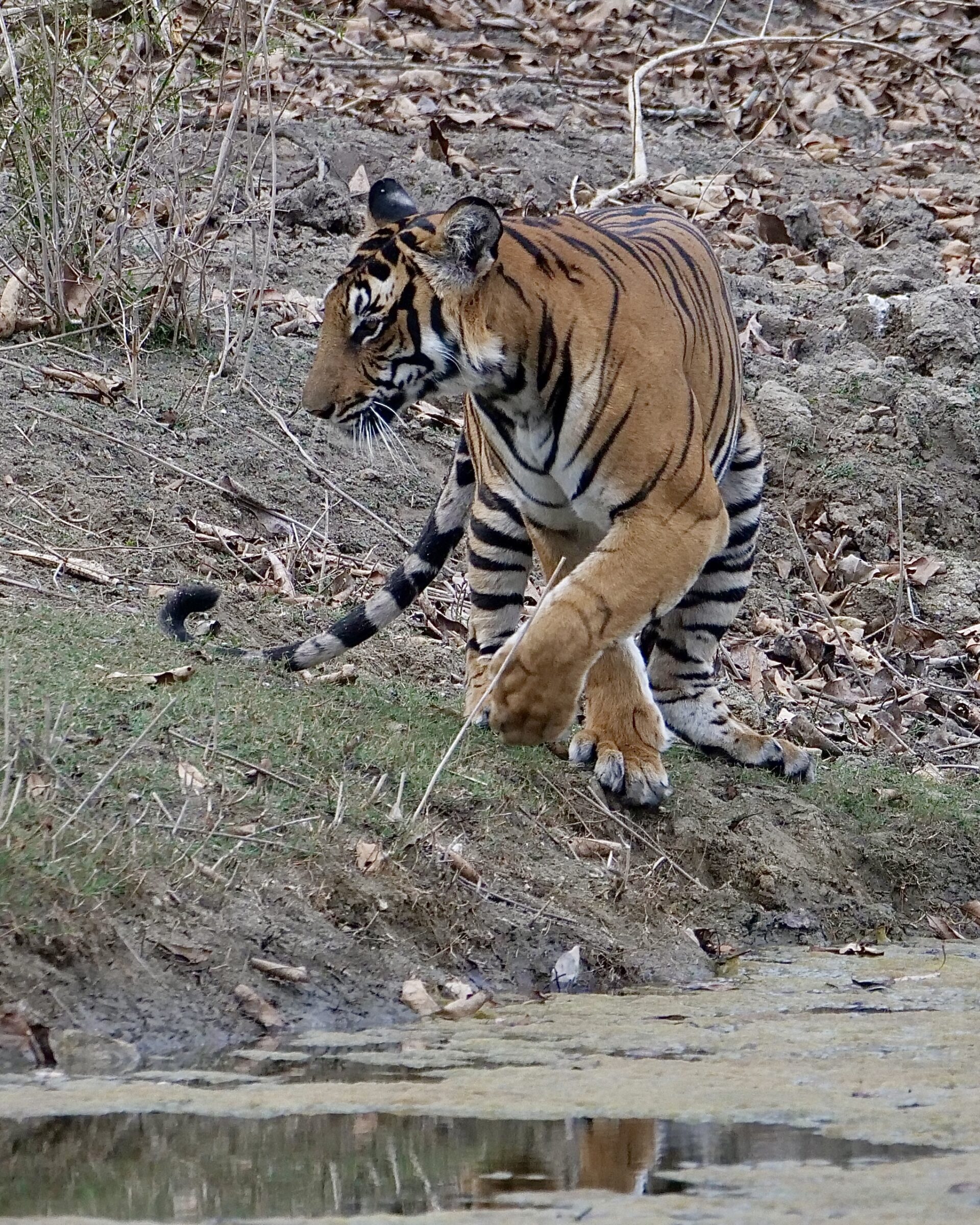
Not many minutes later. – after another “good look around” – she relaxed, stretched out, closed her eyes…
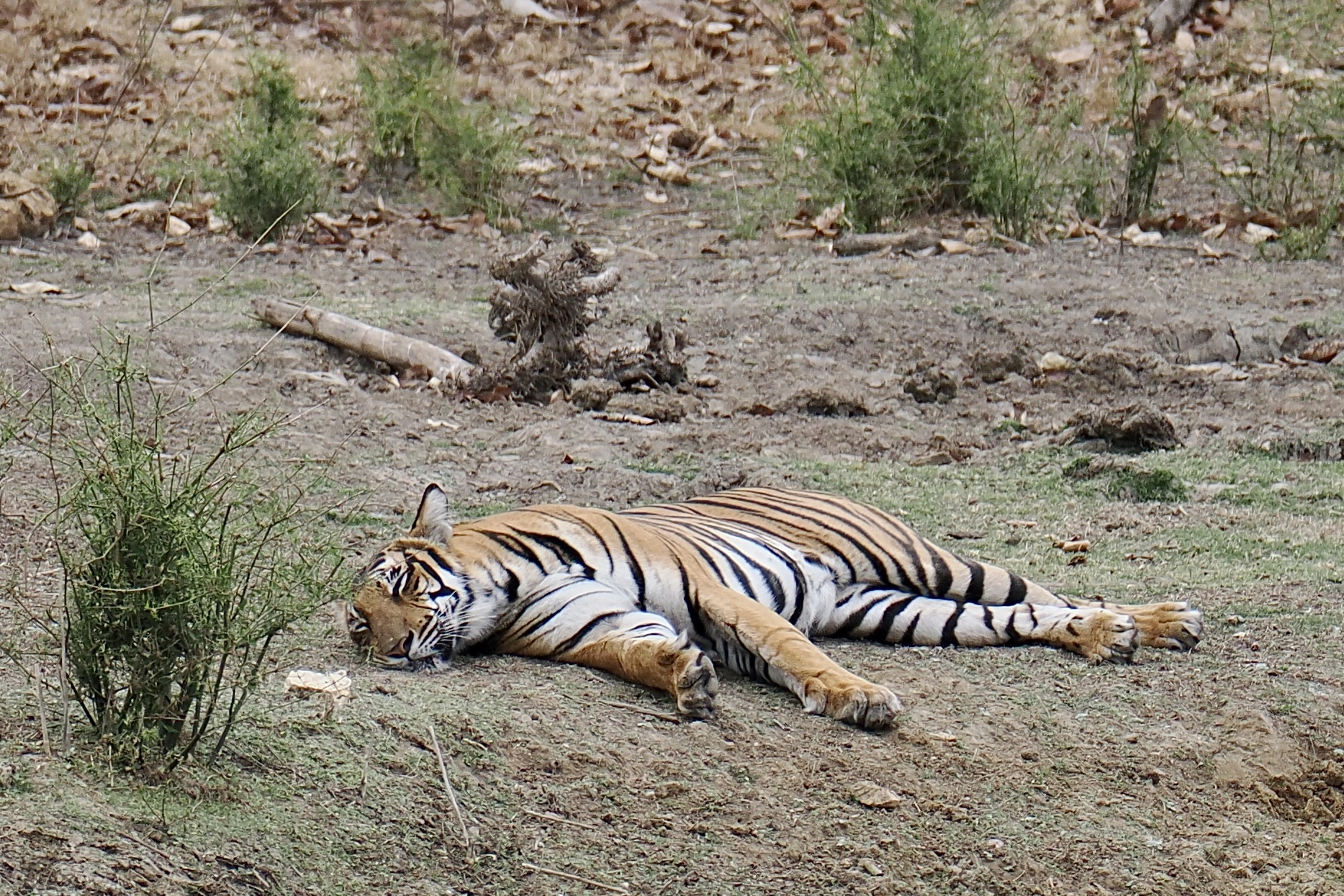
Less than sixty seconds after I took the above photo, I took the one below.
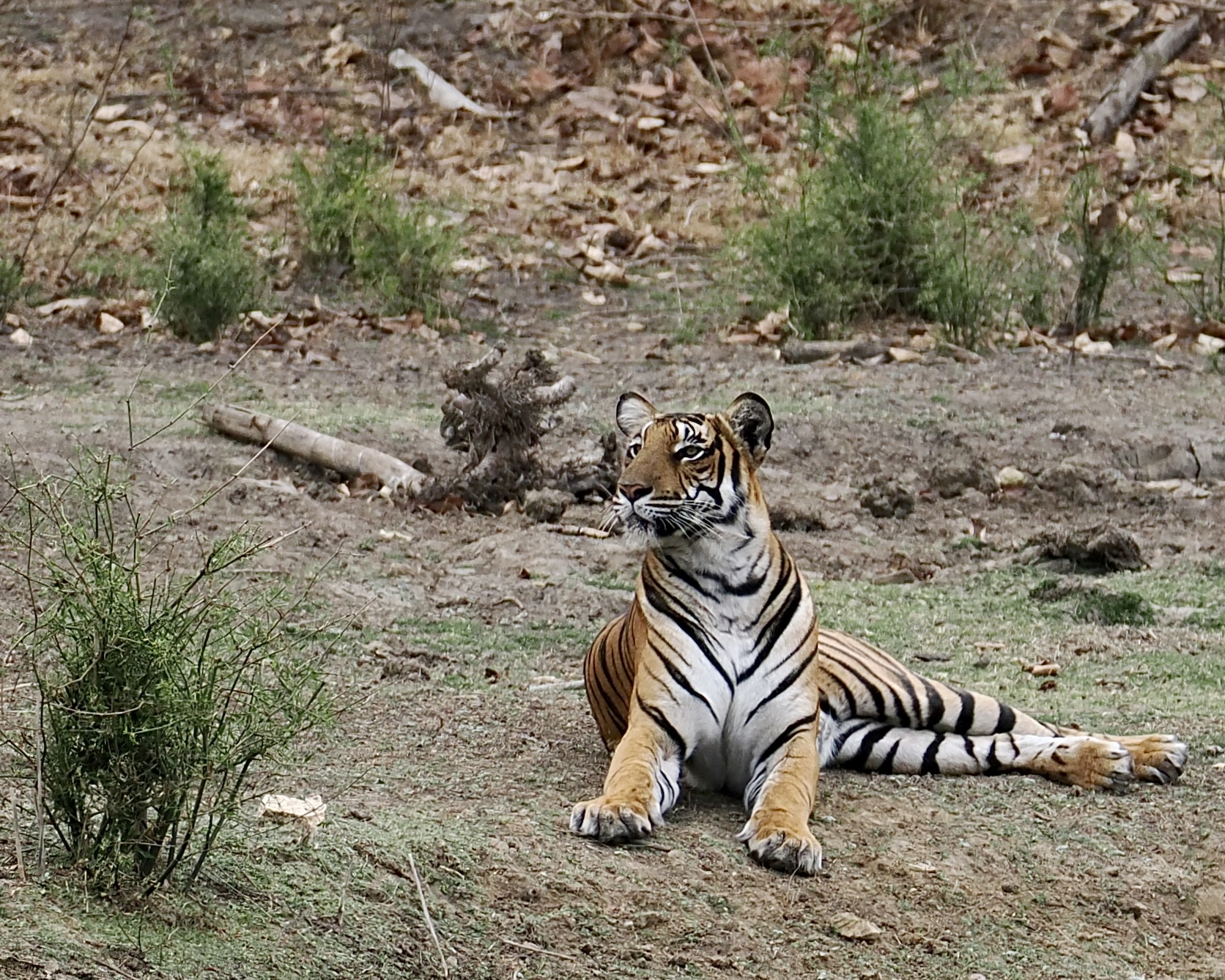
Our heroine had suddenly become highly alert.
This remained the case for the next several minutes.
The cause of her consternation remained a mystery to us.
As we took our leave, it looked like she was starting to settle down, albeit still alert.
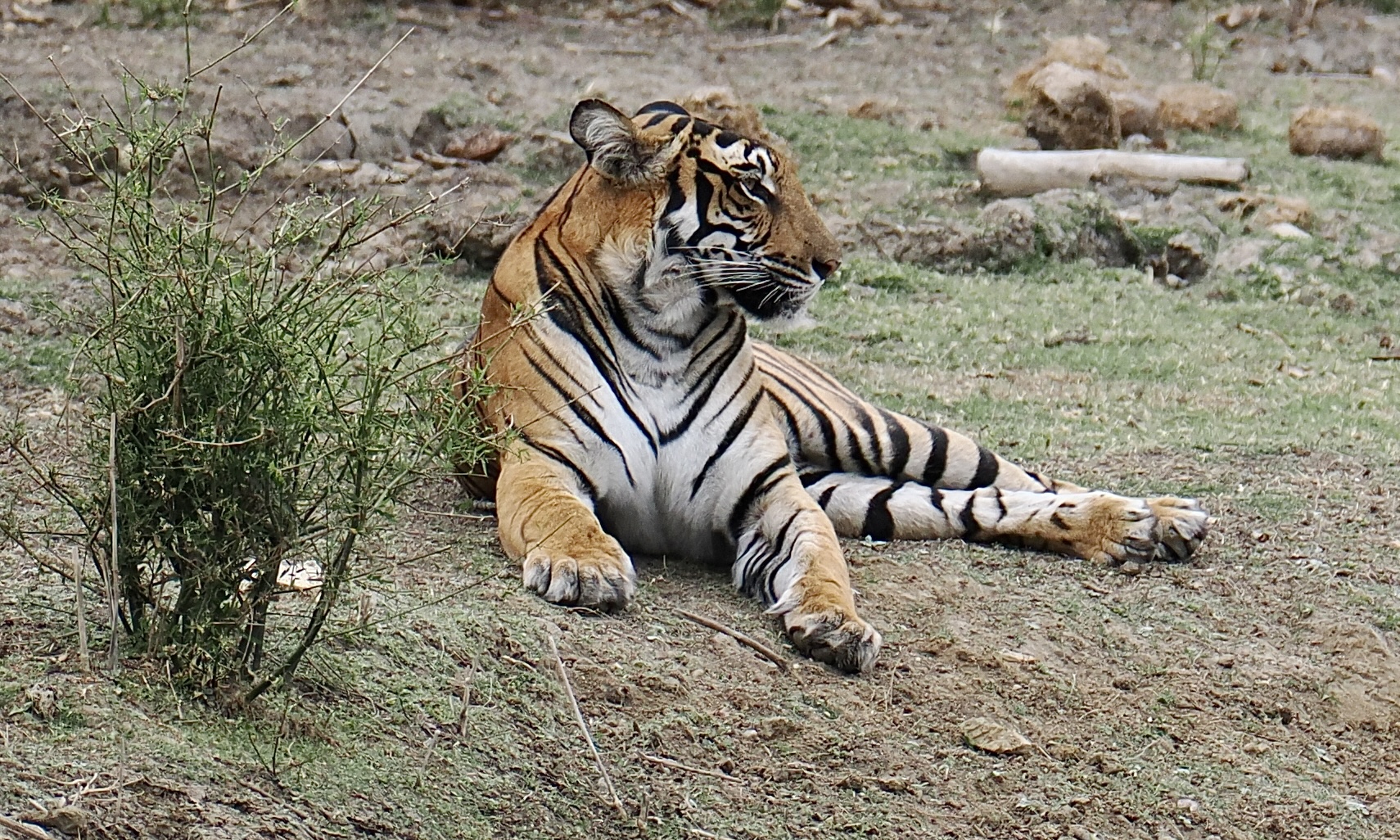
Footnote
K. Ullas Karanth is a passionate advocate for tigers, and an uncommonly clear-sighted one.
He acknowledges that in the best interests of both Panthera Tigris and Homo sapiens, it sometimes is necessary to kill a man-eating tiger, and that some humans should relocate, away from prime tiger habitat.
With the above in mind, here are two short extracts from Among Tigers:
..“tiger lovers” in cities are a formidable lobby, particularly on social media. They file court cases to prevent officials from killing problem tigers. They insist the man-eater be captured safely and released back into the wild, “somewhere else”. The judges in the courts are usually even more ignorant of tiger biology, the technical difficulties in capturing wild tigers alive, and the lack of safe spaces to release such dangerous beasts. The judges issue unimplementable orders in archaic English, trying to satisfy everyone, including their own craving for dense bombast.
——
A scholar at Yale tore into our tiger strategy in the Journal Conservation Biology. He asserted local people should decide whether to relocate, not those who lived in New York or New Delhi. Madhu, the same volunteer who had escaped with me from the gaur attack, had joined me in retorting that while we agreed with this proposition, it should be extended to include residents of Yale and Harvard.
